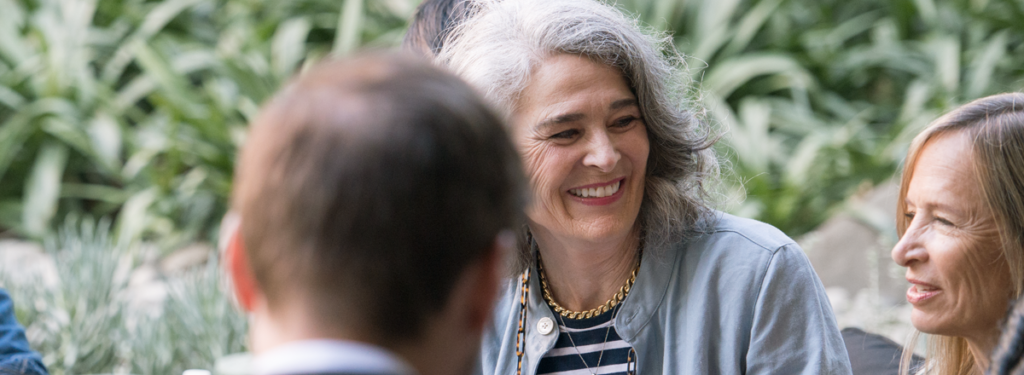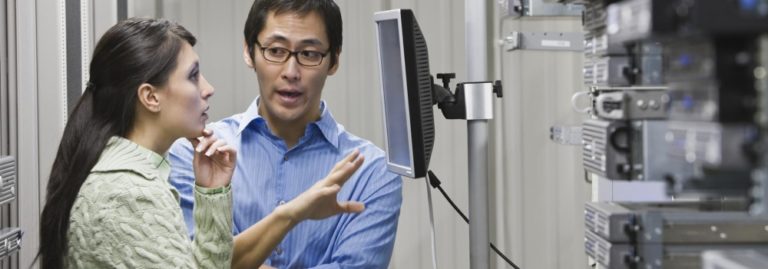Antonietta Grasso (photo, right) is a computer scientist at the Xerox Research Centre Europe in Grenoble, France. Her job is to observe people at work, then design workplace technology based on her findings. Her team of ethnographers and computer scientists dives deep into work environments, studies them closely and works out ways to make technology and processes more user-friendly.
As part of a series that looks at user-centric design, we asked Antonietta about her discoveries.
Making workplaces better sounds like a great job. What does that look like?
Antonietta Grasso: We do traditional ethnography, which means studying people in their work environments, and observing how they use products and services and the context they use them in. This is fascinating in itself – market research and interviews can get you so far, but finding the difference between what people say they do and what they actually do is fundamental when it comes to really helping them.
What’s unique about my team in Grenoble is that our ethnographers work with product developers, and computer scientists like me. In pure traditional ethnographic research, the ethnographers conduct a study and publish it as a long report. The product developers read the report and use it however they want. Our team actually works together at all stages to get deeper and more useful insights. We benefit from each other’s expertise.
What are the benefits of working with a multidisciplinary team?
AG: Our approach helps us unpack what the ethnographers find out and make it actionable. They’ll come back with masses of information, but then it’s up to the technologists to work out which of that information to use.
In the short term, the ethnographers bring back to the designers what they’ve observed in the field and suggest some areas for fixes – either in the tech or in the processes. These are useful, but they’re not usually exciting in terms of big innovations.
The really exciting game-changers come over time, when ethnographers and product developers work together to squeeze out rich, deep insights that can be used to develop new concepts and work out long-term visions. For instance, we did a project that involved call centers that had a problem with attrition – a very common problem in most call centers and one that really deserves more attention. Our work helped find a way to improve job satisfaction there. For instance, we realised the associates on the phone couldn’t see in real-time how close they were to hitting their targets. This meant they couldn’t really respond to incentives, nor fully understand what was driving the variability in their pay. We fixed that by developing a desktop widget that allows everyone to see at all times how close they are to their goals.
All of this work happens in an iterative way, with many exchanges and refinements. We have multiple work streams: a stream of field studies, a stream of tech that can work with the findings, and a stream for feeding back to the business to see which areas are most interesting to them and how they can be used to design solutions. All of this together makes big innovation possible.
This iterative approach is similar to the one used in lean start-ups. User-centric design allows us to turn insights into ideas and prototypes quickly — but we also add a long term axis of technology development. User feedback is an important part of this development, but it’s not the only one because it may curb the ambitions of new services further down the line.
Xerox researchers create the future today. Learn more about innovation at Xerox.
Can you give us another example of your work in action?
AG: Sure. Traffic and congestion are big problems in most large cities. They lower quality of life, cause pollution and environmental damage, contribute to longer commutes and so on. Traffic planners have been trying to fix the problem for a long time. But the ways they’ve tried to encourage people to use transportation other than their cars, with simplistic gamifications of trip planning apps with “win-a-prize-like” incentives, have been pretty ineffective.
We tried something different. Our first step was to dig down into a whole range of commuter profiles, and work out their motives for choosing a mode of transport. We took these initial findings back to the developers and worked on ideas for products that businesses could use to encourage their employees to drive less. We included diary and tracking systems that showed things like time or money saved by not using a car, the health benefits of walking or cycling, and other nudge tools – like showing how much environmental damage different methods of transport would cause.
And was that successful?
AG: Yes. But this is only part of the story: The deeper insight here was about process. Changing behaviors is really hard – people are naturally resistant to change. But there are moments in life when they’re more receptive: switching jobs, moving to a new house, getting married, having a baby and so on. By working on tools that are capable of identifying such moments, we found a lever to help overcome this inertia. The result of this is what’s coming in our next app.
Observation sounds a little old-fashioned in an age that’s all about big data.
AG: That’s a good point. We live in a quantified world where people look for statistics, but our work is not statistical in nature. There are specialists for that. What we do is much more a blend of scientific and creative thinking. That’s why we can provide value in both research and consultancy – we’ll identify quick fixes, but also tease out long term changes to improve technology or processes.
We do actually use data, but only when we’ve identified where it makes sense. In the call center example, we know from the data that, statistically, there’s a ‘grey zone’ in the agent/customer conversation. This zone begins when the conversation starts to get a bit long and where the agent needs to make a judgment on either ending the call or letting it continue quite a bit longer to achieve a good level of customer satisfaction. The data tells us about the length of calls and the corresponding levels of satisfaction, but it was only through our ethnographic observation that we learned about the tension and how the agents had to continuously juggle between efficiency and quality. We would not have been able to uncover this from the data alone.
The tool we designed, called Agent Performance Indicator, allows the agents to assess in real time how they are doing with respect to their targets. This helps them establish a balance and make the right choices, instead of having to do it blindly.
In a workplace, there are always reasons people do certain things in a certain way that the company may not understand or appreciate. Our job is to find these things so we can help people work better.
Sweeping statements are usually a good starting point to look for the human, behavioral aspect. Wherever there’s a simplified message – ”cars will disappear,” ”robots will take over,” ”paper won’t be used in offices,” numbers and data can only tell you so much about whether that’s true. We can give you the real story.




Great post Antonietta! Our healthcare challenge is, I think, of high complexity, given that the targets of the organisation are so complex, and that the mechanisms in action includes so many human factors and factors out of our control…